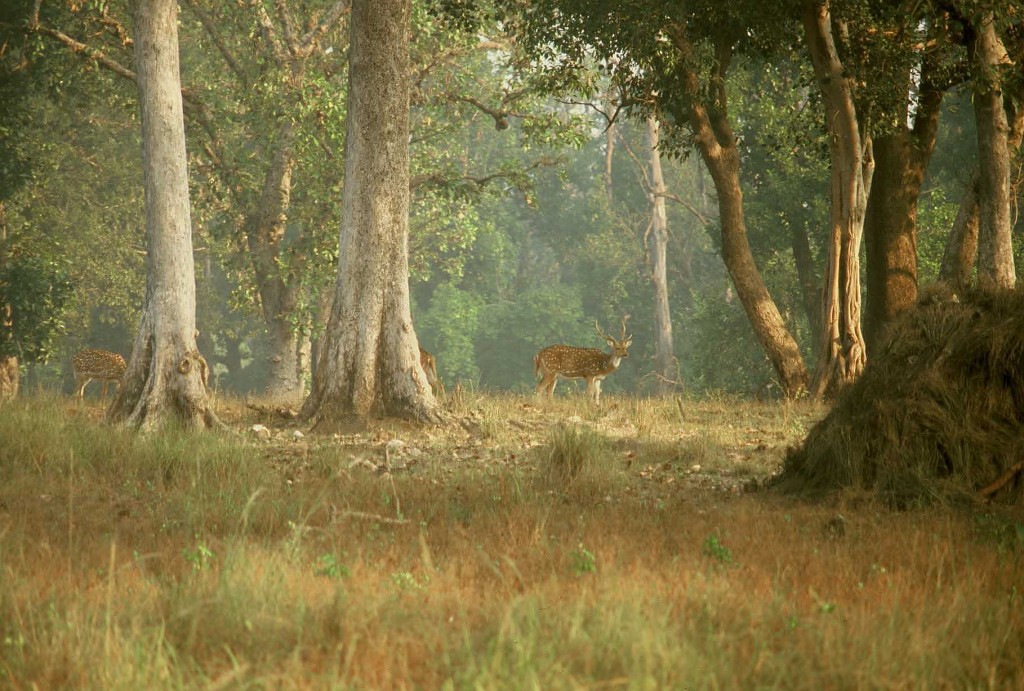It’s a sight to quicken the pulse; to thrill visitors unused to the behaviour of wild animals; to amaze even the tourist skeptical of safaris that all too often resemble a visit to the zoo. A pair of lions, a regally maned male and his dour but dignified mate, gambol beside a water source. At first, the lion worries a plastic bottle left behind by some careless visitor. Even as I start to fret if he’ll ingest the plastic, he loses interest in it and starts to tug at his mate’s tail instead. She puts up with it for a while and then snarls a warning. They end up in a half-hearted squabble, mock wrestling and growling just a wee bit. We watch for a while and reluctantly drive on. I wonder about the fact that the lions didn’t even spare us a glance, though our van had been parked just a few feet away from them.
I am in the Bannerghatta Biological Park, Bengaluru’s favourite getaway. I have signed on for a Jungle Lodges Resorts (JLR) night-stay package, which includes all safaris and meals. Earlier that day, I had checked in at the JLR camp; 11/2 km inside the park, past ponds filled with blooming pink lotus, huge anthills, black boulders of all sizes, and an overreaching canopy of bamboo. As one approaches the camp, spotted deer and sambar stop in their tracks to cast curious stares.
When I was in my tent, I heard the loud chatter of birds and looked out for them. And I found them in all hues… green-winged, brown-throated, sleek black, bright yellow and blue… hopping on leafy branches and flitting from tree to tree — each adding its own mellifluous tone to the bird chorus. At 3 pm, I set off for the Grand Safari with some other guests, in the safari van. The Grand Safari includes the Lion Safari, the Tiger Safari and the Bear Safari. We did the Bear Safari first. The park has 28 bears, of which we glimpsed a few. Some were fast asleep curled up against rocks, others nosed around the trees, still others were shovelling up mud. One little fellow was so alarmed by the sound of our van that he scampered behind a building and poked his head out to see if we had left. Some of these bears are animals rehabilitated from circuses.
The Lion Safari was the next highlight. In the tiger zone, we have one wellfed cat come up close to the van and sniff us. His attention waves soon, however, as another tiger approaches the wire enclosure here and goes off to guard his territory with a threatening roar. To add to the sound and fury, a white tiger comes up on the other side and roars lustily. It is quite something to imagine these roars reverberating across an open jungle; an awesome sound that can only be described as thrilling.
It’s not our day for spotting elephants, however. We don’t spot even one, in the range or anywhere else. However, on our way back to the camp, we see a young leopard saunter down a dirt path, all sleek muscle and power. The safaris, stage-managed or not, make the Bannerghatta visit fully worth the time and money.
Back at the camp, I decline the offer of a wildlife movie and bonfire. Instead, I climb into a hammock, close my eyes and relax; I listen to the wind whistle high among the treetops. After a while, I look up to see the miniscule light of a plane blinking far up, and as the night darkens, I watch the stars growing brighter, framed by leafy fronds. Suddenly, the night seems full of the distant roar of big cats.
Next morning, after my wake-up ‘cuppa’ tea, I head outside where KN Mahadeva (“Call me KNM”), the affable guide is ready to take me on a 40-min walk through the Herbivore Safari grounds. Sambar, gaur, antlered deer all stop to stare at us, a little disturbed by our presence. A female sambar comes up close to say a personal hello. We come upon a pack of magnificent gaur and KNM tells me not to lock eyes with the most magnificent specimen, Arjun. I can’t help but look at him, find him looking coldly at me, and I look hurriedly away. The walk yields sights aplenty. Herons, kingfishers, jungle fowl, many a herd of antlered deer, spotted deer, chinkara (“Salman Khan’s favourite animal,” KNM says facetiously), barking deer, nilgai, and even rock formations. I was particularly intrigued by a woodpecker’s insistent drilling at a branch.
Breakfast at the camp is puri bhaji and egg and toast, all chased down with some excellent coffee. We then head to the zoo, which is a fun ramble but quite tame after the safaris we did the evening before. We get to see many elephants at their gathering point, though. When I leave the place, it’s with a heart and mind full of big cats, regal, dignified and simply magnificent.
About Bannerghatta National Park
The Bannerghatta National Park was established in 1971. The park is made up of 10 reserve forests of the Anekal Range of the Bengaluru Forest Division. Surrounded by hills dotted with ancient temples, the park lies on the Bannerghatta Road, 23 km from the town centre, in the southern precincts of Bengaluru City. It is 104.27 sq km of moderate jungle and shrubland at an altitude of 3,375 ft. The terrain is interspersed with valleys, streams and scenic spots. The main parkland vegetation is dry deciduous forests and thorny scrub with patches of moist deciduous forests. It’s crisscrossed by streams that fill up in the monsoons. The wild expanse of this small but important National Park, located just beyond the Bannerghatta Biological Park (BPP), is home to wild Asiatic elephants. The two natural predators here are the leopard and the wild dog. The forests here are also home to barking deer, sambar, sloth bear, wild pig and at least 180 species of birds. Being so close to a major metro has created its own problems for the park. With growing industrial/ urban and biotic pressures, there is increasing threat to the already fragile wildlife habitat and its residents. There is a strong need to take action to protect both the forest and the animals. Incidents of poisoning of leopards and electrocution of elephants are on the rise. The sharp increase in destructive human activities (poaching, grazing, fires, quarrying) is also affecting the park.
Quick Facts
State: Karnataka
Location: South of Bengaluru City in Bengaluru (Urban) District
Distances: 23 km South of Bengaluru, 125 km NE of Mysore
Route from Bengaluru: District road to Bannerghatta
When to go: Open all year round but you get to see the park at its greenest between mid-Jun and Aug Best sightings Nov-Jun
Wildlife/ Forest Dept office: DFO, Bannerghatta NP District Bengaluru
Telephone: 27828540, 28429366
STD code +91-80
About the Author
Someday, Sheila Kumar will go see places just for the sheer pleasure of seeing places. Meanwhile, she hits the road, song on her lips, sunscreen in her handbag, and notebook and pen close at hand.







